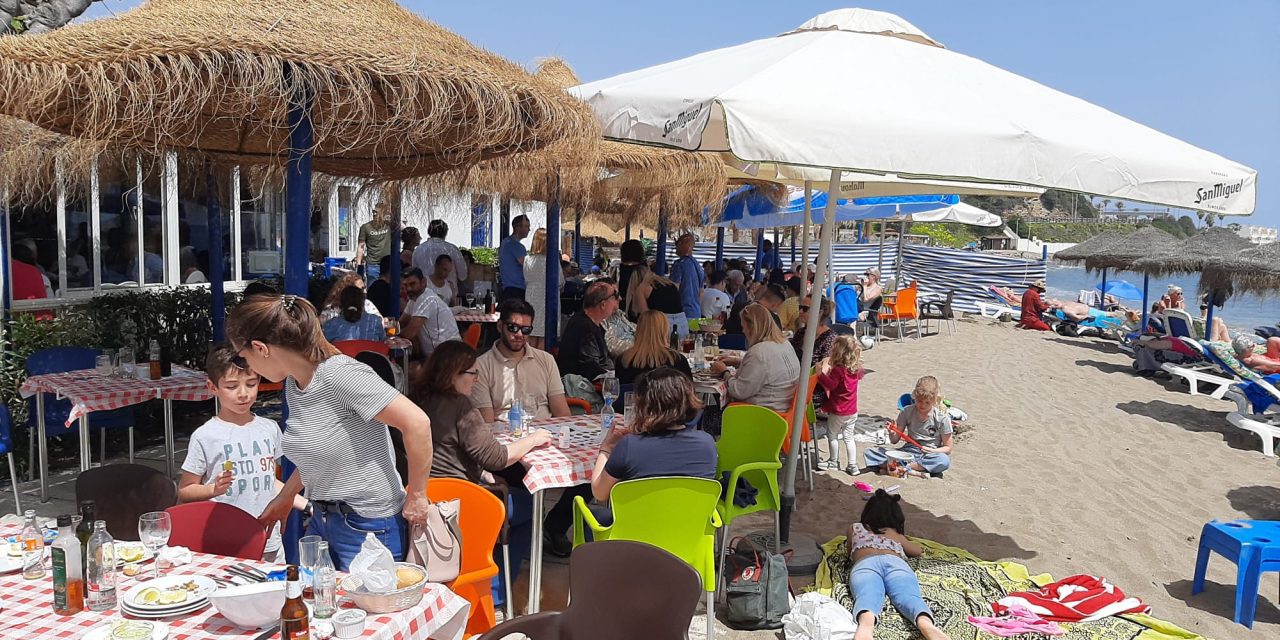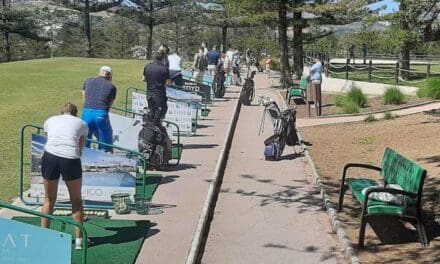Former Huddersfield gymnast and pub landlord Brian Hayhurst and his wife Elaine are ex-pats who have lived just outside Fuengirola on the Costa del Sol for 20 years. He writes every fortnight for Huddersfield Hub.
As visitor numbers again rise above all expectations at Southern Spain’s main airport here – Malaga – the AGP three letter code which is on all baggage tags, has been a bit of a mystery since this busy hub originally opened 100 years ago.
There have been several theories about how AGP became the identity code for Malaga. The main ones used in documentation are the initial letters of ‘Aeropuerto Gran Picasso’, meaning Airport Great Picasso, after the famous artist, of course.
Another suggestion was that the land on which it stands was a farmer’s plot whose initials were AGP. And another was to use some of the letters of a former Roman temple on site called Agrippina.
But others think the most likely explanation is that other airports took up most of the letters which might identify Malaga, leaving the only remaining letters AGP.
Attached to the airport’s meandering main terminal, there is a small museum which has lots of artefacts and rare items looking back at its humble beginnings from the busy years of service which is now linked with 60 countries.

There is what looks a like a domestic sideboard which was the main check-in desk. Elaine and I can remember the old terminal back in the 80s having a small cafe bar from which you could take drinks outside whilst awaiting the tannoy flight announcements. The cafe had a flimsy wire fence separating it from the main road.
Most folks arriving for a holiday simply use this huge concrete maize (opened in 1991) as a start point and do not realise that this capital city of Malaga, besides being steeped in history, has some stunning beaches on the sparkling coastline, some lavish restaurants and a deep-seated culture, rarely seen in other Spanish towns and cities.
History shows that Malaga is one of the oldest continuously-inhabited cities in the world, spanning 2,800 years!
Now, this vibrant city includes for example The Picasso Museum. Pablo Picasso, born here, was described as an artistic genius producing hundreds of thousands of pieces of art and ceramics, breaking boundaries with his ‘Cubism’ and ‘expressionism’ which we did not understand or appreciate when we went there.
Picasso died in 1973 and, had he been alive today, he would be the richest man in the world. His family paid his estate taxes after death with some of his extraordinary works of art.
The flamboyant port has a multitude of recreational and gastronomic outlets to attract the many cruise passengers.
In the city centre are La Alcazaba Castle, roof top bars, the 250-year-old spectacular cathedral and, of course, each Christmas the incredible light/sound display which twice nightly, attracts thousands to witness the amazing 30-minute shows in Calle Larios – the main street.
READ MORE: Enjoyed reading Brian’s blog? Have a scroll through his back catalogue HERE
Finally a recap of some headlines likely to affect those living or visiting the Costa del Sol:
- Spain is vigorously now consulting Brussels, demanding an end to the 90-day rule which has drastically affected tourism. And discussions over driving licences for resident Brits with UK licences, is almost resolved.
- The cost of fuel at the pumps and bottled domestic gas is dropping steadily. We can now vote in local elections.
- And a reduction of 21.6% in wholesale electricity will be most welcomed here. But, sadly, food banks are getting busier!
I read that a friend in Huddersfield almost had his British Gas direct debit increased by £1,000 per month – an amount which would have been plucked from his bank account had he not spotted it.
Here in Spain this is common, as authorities will take anything owing directly from your bank with no warning!
With the World Cup in full swing, Spain comes to a standstill when they play!


















